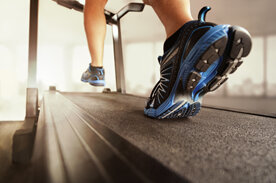
Whether it's higher priorities, high pressure work requirements, children to care for, socialising with friends, relaxing or a constantly growing list of ‘to do’ jobs. Even simply wanting to do something ‘more enjoyable’ with that fraction of free time from a hectic day is a justification (or excuse depending on perspective) for not exercising.
Unfortunately given how crucial regular physical activity is for health and wellbeing as well as the numerous benefits including increased energy, stress reduction, better sleeping patterns, and improvements on mood, it isn’t something that should be pushed to the bottom of the list.
Ways to overcome this are varied and not all options are suitable for every person so the key is making exercise a priority and finding ways to make it part of your lifestyle rather than another chore that can be missed.

Schedule movement as a key priority
Not being able to fit in exercise can be overcome through a change in perspective in regards to scheduling and the priority activities. Prioritizing activities means a doctor’s appointment or social event isn’t missed off the schedule due to lack of time and if exercise is considered as important as these types of activities it becomes a priority. This leads to more emphasis on a committed exercise regime and more compatible, long-term scheduling.
Increase ‘incidental’ exercise
Incidental exercise occurs as a result of daily activities undertaken from a slightly different angle. This type of movement includes making choices such as always choosing the stairs over the lift, parking further away and walking longer to get to your destination, taking a walk in lunch breaks, changing your commute style to include biking or walking, moving during the commercial breaks instead of remaining on the couch, removing the batteries from remotes resulting in movement to adjust television sets and even simply stretching every hour aids in oxygen flow and muscle movements.
Practise Isometric Exercises
Isometric exercises are exercises that contract a muscle or muscle group (tensing) while the joint angle or muscle length does not move. Examples of Isometric exercise that can be done at an office desk is the tensing of abdominal muscles for several seconds at a time then releasing and repeating (Static Tension Isometrics), pushing against firm, immovable objects such as walls or tables is a way to work upper body (Overcoming Isometrics) or tensing thigh and leg muscles as you work. Regular breathing is ideally maintained throughout each muscle contraction. Although seemingly simple and therefore insignificant, many traditional strongmen such as Max Sick and Alexander Zass often used Isometric exercises as part of their training programs.
Make the exercise work for you
Exercise can keep you healthy and in shape but it can also be useful in many other ways such a cognitive function, socialisation and unwinding. If family time is a must, exercise can be an integral part by scheduling family activities such as bike rides or if attending children’s sports instead of standing on the side-lines warm up with the team and reap benefits from the short sharp burst of cardio. Instead of coffee shops and lunches, schedule walks in parks to catch up with friends and family as low to moderate intensity exercise is well known for its cardiovascular benefits. If it is difficult to wind down after a hectic day a session of stretches, yoga or circuit training can aid in a clearer mind and more restorative sleep in preparation for the next busy day.
Lastly, if time just cannot allow much movement during the week, try to fit in one small burst during the week and schedule two longer sessions during the weekend to reach your minimum movement goals. Any activity is far greater than no activity at all.
Sources:
Sports Medicine 2016
Mayo Clinic, Healthy Lifestyle & Fitness
Muscle and Fitness
Isometrics Strength
Sports Fitness Advisor